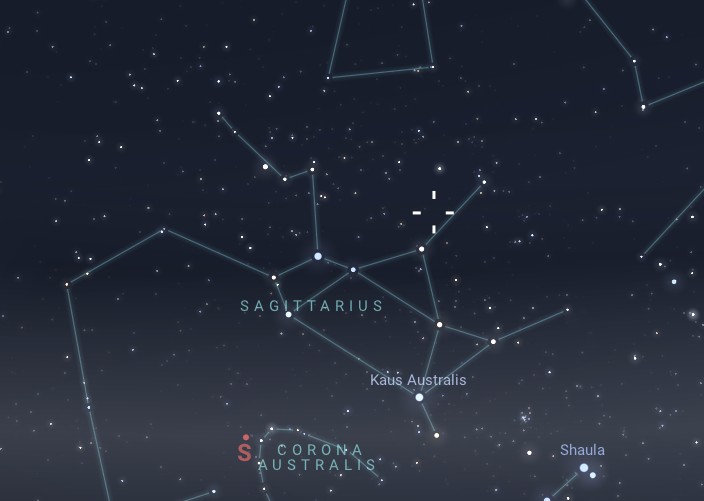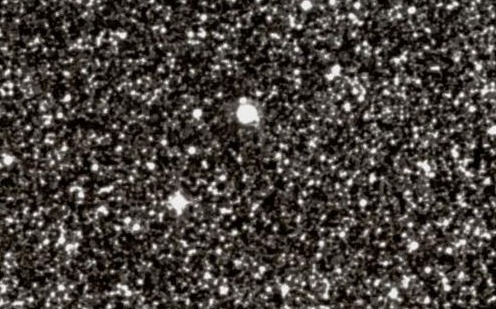NGC 6629 is a planetary nebula located in the constellation Sagittarius, known for its unique and intriguing appearance. Here’s a look at this celestial object:
Location
The distance to NGC 6629 from Earth is estimated to be between 6,000 and 10,000 light-years. Sagittarius, its host constellation, points toward the galactic centre, making it a region rich in stars, gas, and dust. Consequently, the nebula resides within one of the spiral arms of our galaxy, relatively close to the plane of the Milky Way.
Its coordinates are Right Ascension: 18h 12m 54s and Declination: -24° 03′ 12″. This positioning places it near the celestial equator, making it visible from both the northern and southern hemispheres, although it is more prominently seen from locations closer to the equator and in the southern hemisphere.
Appearance and Composition
NGC 6629 appears as a faint, ethereal cloud when observed through a telescope. Its shape is often described as irregular or asymmetrical, with wispy extensions and delicate filaments extending outward from its core. The nebula’s appearance is characterized by its soft, diffuse glow, which is primarily emitted by ionized gases such as hydrogen and helium.
At the heart of the nebula lies a white dwarf, the remnant of the star that ejected the nebula’s material. This white dwarf is a hot, dense stellar core that emits intense ultraviolet radiation, causing the surrounding gases to fluoresce and emit light. The central star’s high temperature and luminosity contribute to the nebula’s overall brightness and appearance.
NGC 6629’s morphology may exhibit complex structures and features, including knots, loops, and shells, which provide insight into the dynamic processes occurring within the nebula. These structures are thought to result from interactions between the central star’s stellar winds and the surrounding interstellar medium.
The colours which can be observed are primarily due to the emission of specific wavelengths of light by ionized gases within the nebula. Hydrogen emission often appears red, while oxygen emission can appear green or blue, contributing to the nebula’s overall colour palette.
NGC 6629 is a captivating object for astrophotography and visual observation, offering astronomers a glimpse into the final stages of stellar evolution and the intricate beauty of the cosmos.
Observation
NGC 6629 is best observed from May to September when Sagittarius reaches its highest altitude in the sky. Its location within the constellation makes it an excellent target for observers in the southern hemisphere during late autumn and winter, as well as for those at low northern latitudes with clear southern views.

Telescopes, with their larger apertures and higher magnification capabilities, are particularly well-suited for observing faint deep-sky objects like NGC 6629. They allow for better resolution and the ability to discern finer details within the nebula. However, it’s worth noting that even with telescopes, NGC 6629 may appear as a faint and diffuse object, requiring patience and careful observation to appreciate fully.
Giant binoculars, typically those with larger apertures (e.g., 80mm or larger) and higher magnifications, may also be able to detect NGC 6629 under optimal viewing conditions. However, the nebula will likely appear fainter and less detailed compared to observations made with telescopes.



